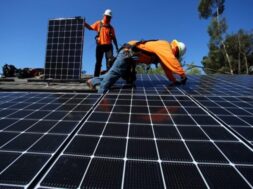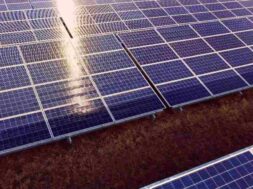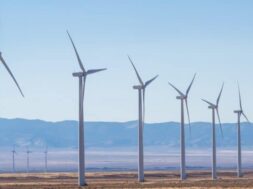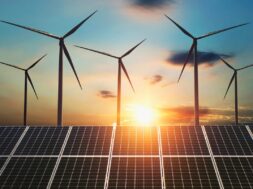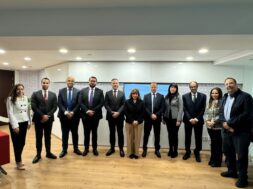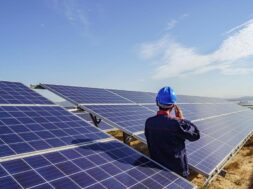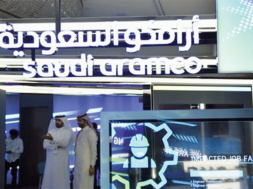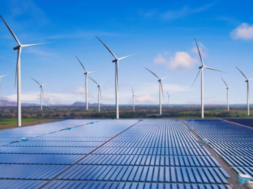
Supportive renewables policies, rising energy demand and efforts to boost electrification rates are driving the development of renewable energy markets across the African continent. With favorable climatic conditions and renewable-friendly investment policies in tow, several sub-Saharan countries have successfully implemented diversified energy mix models which are set to drive the growth of renewables markets across their respective regions.
The top regional renewables energy markets to watch for in Africa in 2023 and beyond include:
North Africa
According to the International Renewable Energy Agency (IRENA), the North African market is set to dominate the continent’s renewables penetration in 2023 and beyond, driven by massive solar, wind and green hydrogen projects deployment.
Egypt, Tunisia, Sudan, Algeria and Morocco have each set ambitious national renewable energy policies, with large-scale clean energy projects both underway and in the works. Morocco, for instance, is set to become a major green hydrogen exporter while Egypt could account for five percent of the global green hydrogen market by 2040 – according to the World Bank.
With North African countries seeking to maximize the massive renewable energy potential across the Maghreb region, giant wind and solar energy projects, including Morocco’s 7.5 GW Amun solar PV facility and Egypt’s 560 MW Abydos solar PV and 505 MW Amunet wind projects, are underway.
Regional mechanisms such as the Regional Center for Renewable Energy and Energy Efficiency and the Pan-Arab Sustainable Energy Strategy – 2030 have the potential to drive private sector investments, encourage technical skills development and knowledge sharing, and enable North Africa to achieve its goal of deriving 12.4% of its energy from renewables by 2030, according to IRENA.
West Africa
With a growing number of West African countries establishing national renewable energy and energy access targets, the region is eyeing universal energy access on the back of heightened renewables rollout. According to IRENA, the region’s solar, wind and hydropower potential present opportunities for countries such as Ghana, Senegal, Ivory Coast, Mali and Guinea to boost the reliability of their energy mix. With annual average solar irradiation of 2 100 kilowatt hours per square meter and wind speeds averaging 6 meters per second, West Africa’s renewables potential is yet to be tapped to drive socioeconomic developments. According to a report released by Wärtsilä in late October, 2022, Nigeria has the potential to achieve 100% renewable energy by 2060, while Mauritania ranks among Africa’s top deployers of solar and green hydrogen projects, with the $40-billion Aman hydrogen and the 3GW Project Nour Solar PV already under construction.
Southern Africa
Representing Africa’s third-largest energy market, Southern Africa accounts for approximately 25% of Africa’s hydropower capacity, 41% of installed wind power and over 60% of the continent’s utility-scale solar generation. With South Africa maximizing investments in solar, wind and in developing a green hydrogen economy, and Mozambique boosting its hydropower capacity whilst Botswana and Angola are kickstarting solar deployments, the region’s renewables market is set to become one of Africa’s fastest growing in 2023 and beyond. Namibia, with its massive investments in solar, wind and green hydrogen industries, is also set to play a key role in the expansion of the regional renewables market.
East Africa
The region’s East African Centre of Excellence for Renewable Energy and Energy Efficiency, coupled with project deployment and electrification efforts by countries such as Kenya, Rwanda, Uganda and Tanzania, are set to drive renewable energy industry growth. Developments in the region include TotalEnergies 120 MW solar PV capacity rollout in Uganda’s Kapeeka, Iganga, Tororo, Kumi, Bukedea and Palisa areas, HDF Energy’s installation of Uganda’s first green hydrogen power plant and the International Finance Corporation’s $150 million in loan financing to support smart energy projects in Kenya.
East Africa’s geothermal sector, with Kenya ranking as the largest African producer of geothermal, followed by Ethiopia, has the potential to provide energy security, price stability, reductions in greenhouse gas emissions and renewables market expansion with countries in the region seeking to address chronic electricity shortages disrupting economic growth.
Central Africa
According to IRENA, the region’s abundant solar and hydropower resources will drive the growth of the renewables market as countries such as Angola, Chad and the Democratic Republic of Congo optimize energy developments to boost consumer access to electricity. IRENA predicts Central Africa has the potential to generate 1 055 GW of electricity from solar and 31 GW from wind whilst the Delft University states that the region’s hydropower potential ranges at 767 GW.


